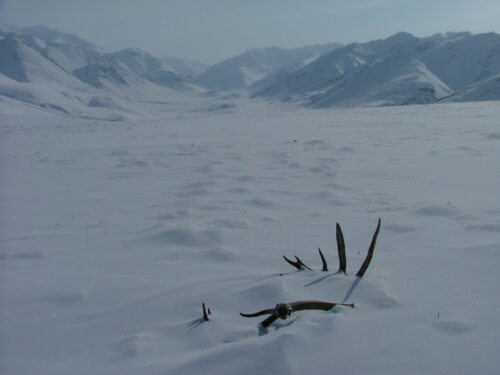
Discussions Ongoing On How To Balance Western Arctic Caribou Herd Conservation And Hunting

The ongoing saga of how to prevent further decline of Western Arctic Herd caribou numbers but also fulfilling subsistence hunting demands from locals who depend on these harvests. It created a contentious Western Arctic Caribou Herd Working Group meeting recently.
The Anchorage Daily News filed a report from the meeting and ho difficult the process has been to striking a balance:
One of the proposals is to reduce the Western Arctic Caribou harvest for local subsistence hunters from five animals a day to four a year, with only one allowed to be a cow. Another proposal is to restrict harvest for hunters not living in the range of the herd — such as fly-in hunters.
“It’s gonna affect everybody,” said Vern Cleveland Sr., the group’s chair and a resident of Noorvik. “The proposal we passed, I hope they get through. This is to help out our caribou and our people. … The caribou is declining big time so we have to act.”
The long-term proposals were sent to both the Alaska Board of Game and the Federal Subsistence Board earlier this year, and there has been a comment period since then. State and federal managers will decide on the proposals during their upcoming meetings in January and spring, respectively.
In an Alaska Beacon piece, the issue of the harvesting of cows us also a hot-button topic:
It is not just the number of caribou hunted that’s important to the herd’s potential recovery, Hansen stressed in his presentation. It is also important to avoid taking females out of the population, he said.
“One cow has a lot of potential to produce more caribou,” he said. The message in his PowerPoint presentation was boiled down to a succinct phrase: “Let cows live.”
But Hansen acknowledged that there are reasons that some hunters might prefer to target cows during their harvests, which tend to be in autumn, when the bulls are hormonally charged and geared toward mating.
“Cows are fat. They’re better to eat. Nobody wants to eat a rutty bull,” he said.
The most recent Western Arctic Herd survey saw another drop, but at a slower rate, providing some hope.



